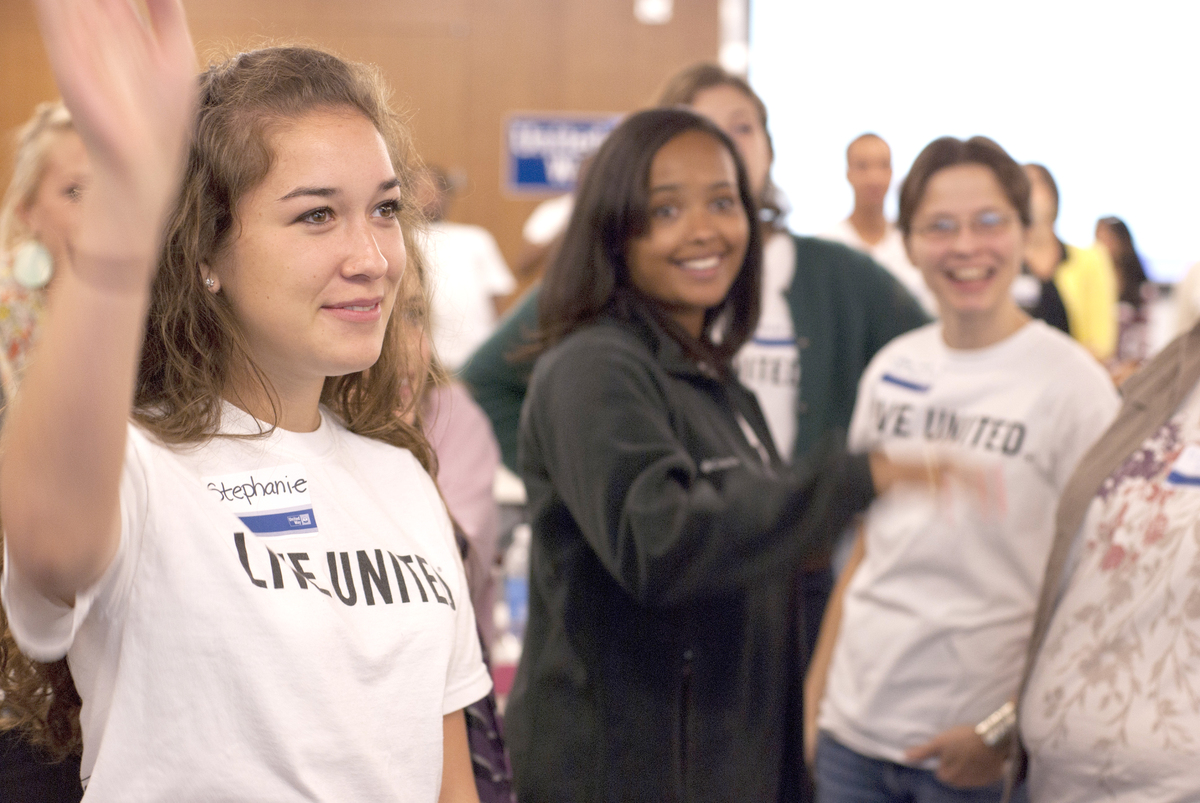
Story by: Geoff Kirsch
While Alaska boasts the country's lowest population density, its nonprofit landscape looks far more crowded- over 7,000 registered charitable organizationa operate statewide, one for every 100 residents.
Of course, in Alaska, nonprofits fill a special niche, especially among the smalled, more geographically isolated communities of the Inside Passage, providing services and resources that wouldn't otherwise exist. But their sheer number can also complicate the state's philanthropic environment.
“Philanthropy becomes even harder to define here because people serve their communities in other ways, like sharing fish with elders or stocking someone’s fridge after they’ve been hurt in an accident,” says Wayne Stevens, president and CEO of the United Way of Southeast Alaska, an organization that seeks to bring together—or “unite”—the region’s myriad organizations, volunteers, advocates, donors and recipients.
What’s more, with government funding continuing to dry up (and new organizations continuing to sprout up), not only do Alaskan nonprofits rely on charitable giving; they compete for it. And so, for the average recipient of fundraising calls during dinner or printed appeals in the mailbox, deciding which issues to support and how best to support them can seem confusing, daunting and time-consuming.
“Simply put, Southeast Alaskans want to help,” Stevens explains. “They just might not be sure how to start. That’s where the United Way comes in.”
Since 1974, the United Way of Southeast Alaska has been working to “advance the common good” by recruiting people and organizations throughout the region to identify community issues, focus a response and effect change. With its recent “Live United” movement—based on the idea that extending a hand to one improves society for all—the United Way outlines a simple strategy for those wishing to take part in Southeast Alaska’s philanthropic process: “Give, Advocate, Volunteer.”
Give. Giving to the United Way—especially through its Annual Workplace Campaign, which begins this month and continues until the end of 2013—remains the easiest and most powerful way to invest in Southeast Alaskan communities. Through a regular payroll deduction or direct gift, employees (often with matching employer donations) can support 33 United Way partner agencies, from hospice care in Haines to social services in Sitka, youth initiatives in Ketchikan to senior centers in Juneau to family programs in Petersburg.
“There are 37,000 jobs across Southeast Alaska—not counting 2,500 self-employed,” says Stevens, noting what he terms “huge potential.” “If everyone donated $2 of their weekly paycheck, that would total $3.7 million a year—straight to community service across the region.”
Charitable contributions to the United Way of Southeast Alaska can be split equally among all its partner agencies, or directed into one of three action areas—Education, Income or Health—identified by the United Way as “building blocks for a good life.”
“We try to isolate and focus on an ‘umbrella’ issue, like literacy, that influences many other issues. By addressing that one, you address them all,” Stevens says.
Not simply a funding entity, the United Way is itself an active community organization. No single nonprofit can tackle a large-scale social problem on its own; positive change requires collective action, a combination of time, talent and resources that can only come from organizations, government, businesses and individuals working in synchrony, with a singularity of purpose.
Here, United Way of Southeast Alaska facilitates conversations between various groups, not only identifying specific needs, but also focusing passion, resources, expertise and human power squarely on those needs. A prime example: every month, the United Way of Southeast Alaska convenes a meeting of food resource groups to find gaps in service—such as those in school lunch programs during summertime—as well as to eliminate redundancies.
Advocate. Of course, the United Way also emphasizes advocacy as a means of philanthropy, encouraging those who consider themselves passionate about education, income and health to vocalize their thoughts, “champion the cause and make some noise.”
“Advocacy opens the doors of opportunity,” says Stevens, noting advocacy as a welcoming avenue for those who don’t normally participate in philanthropy to become active.
Volunteer. As any charitable organization in Southeast Alaska will tell you, volunteerism is a nonprofit’s lifeblood. To that end, the United Way actively works to develop volunteer opportunities both for children and adults. Most recently, it launched Get Connected (getconnected.unitedwayseak.org) a social media-style volunteer engagement and management platform linking prospective volunteers with community organizations throughout the region. Not only can participating agencies post available opportunities; volunteers can create individual profiles specifically tailored to their schedule and interests, creating a vast volunteer talent pool.
“We’re hoping to build on strengths and assets already in the community,” Stevens says. “Helping volunteers and nonprofits find each other—it sounds so simple, yet it’s so effective in supporting direct-service programs and effecting social change.”
With so many ways to engage in philanthropy, the United Way believes local residents will not only continue helping their neighbors—they’ll encourage those neighbors to help their neighbors, and those neighbors to help their neighbors, and on down the line.
“Southeast Alaskans will rise to the challenge,” says Stevens. “We always do.”
Learn more about United Way and its 33 partner agencies, visit www.unitedwayseak.org. To donate online, visit www.unitedwayseak.org/donate. To volunteer, visit getconnected.unitedwayseak.org.
